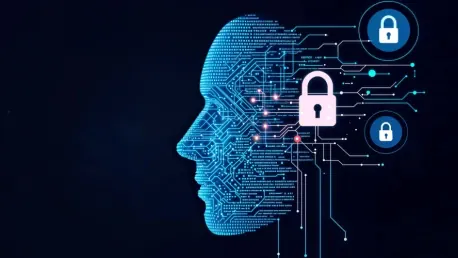The role of artificial intelligence (AI), particularly generative AI (gen AI), in cybersecurity is a fascinating development in today’s digital landscape, sparking vital discussions about whether AI threatens human creativity in detecting cyber threats. This topic probes into how human creativity and AI can synergize effectively in cybersecurity, enriching the field with innovative solutions and creating a balanced approach to evolving challenges.
The Necessity of Creativity in Cybersecurity
Cybersecurity inherently demands creativity and innovative thinking to stay ahead of increasingly sophisticated cyber threats that continually evolve. As these threats grow more complex, specifically those conducted by nation-state actors targeting critical infrastructure, organizations are compelled to seek individuals with diverse backgrounds and soft skills to bridge the cyber skills gap. This rising complexity in cyber-attacks calls for a broader perspective and creative problem-solving abilities to anticipate and counter these new threats effectively.
Creativity in cybersecurity isn’t limited to generating new ideas but rather involves a comprehensive and big-picture perspective. It encompasses interpreting historical data adeptly and locating critical information that might not be immediately obvious. These skills prove essential for various tasks, such as threat hunting, predicting threat actor movements, and uncovering hidden evidence during forensic searches. Skilled professionals can use their creative insights to decode complex patterns and anomalies that algorithms might miss, showcasing the irreplaceability of human ingenuity in the field.
AI’s Role in Routine Cybersecurity Tasks
While creativity is indispensable, a significant portion of cybersecurity work involves routine, repetitive tasks such as monitoring logs and identifying false positives. AI has emerged as an invaluable tool in managing these responsibilities, helping to alleviate the prevalent talent shortages in the industry. By taking over mundane, time-consuming tasks, AI empowers cybersecurity professionals to focus on more complex and demanding challenges that require human expertise and inventive approaches.
Beyond handling mundane tasks, AI demonstrates a growing capability to address sophisticated threat actors, manage the massive influx of data, and oversee hybrid infrastructures. This efficiency makes AI a valuable asset in the cybersecurity arsenal, complementing human efforts and helping to enhance the overall security posture of organizations. By leveraging AI’s strengths, cybersecurity professionals can remain poised and agile, ready to tackle higher-level threats while maintaining robust defenses against evolving attack vectors.
The Creative Potential of Generative AI
Many organizations recognize the value of AI, especially gen AI, in handling creative tasks that extend beyond cybersecurity into domains like marketing, public relations, writing, and research. However, the question arises whether AI threatens to undermine the significance of human creativity in threat detection. Threat actors themselves are leveraging gen AI in their attacks, producing more grammatically accurate and convincing phishing emails and designing sophisticated social engineering schemes, thus raising the bar for cybersecurity defenses.
The evolving tactics of threat actors necessitate a creative approach to cybersecurity, where defenders must harness their ingenuity to anticipate and counter advanced techniques crafted by malicious actors. The landscape of cybersecurity is thus in a constant state of flux, demanding continuous innovation and creativity to stay ahead. As AI continues to evolve and integrate into these workflows, balancing its capabilities with human creativity remains a pivotal challenge and opportunity within the sector.
Augmenting Human Creativity with AI
AI can augment human creativity, offering significant advantages despite its flaws. Users have encountered scenarios where AI incorrectly identified original work as plagiarized or generated false information, undermining human analysts’ research efforts. Moreover, AI algorithms can be biased, resulting in false positives. These limitations underscore the necessity of human oversight and intervention to ensure accurate and effective cybersecurity practices.
Nevertheless, many cybersecurity professionals and creative individuals deem gen AI a valuable tool primarily because it saves time. AI-assisted prototyping, for example, allows large language models to handle code refactoring and documentation swiftly, enabling users to create prototypes and visualize ideas within minutes rather than hours or days. This time-saving aspect can free creative minds to focus on more innovative aspects of cybersecurity, merging the strengths of AI and human ingenuity for robust defense mechanisms.
The Future of AI and Human Creativity in Cybersecurity
AI and creativity together have the potential to foster future leaders in cybersecurity, significantly impacting how organizations handle security threats. Research from IBM indicates that two-thirds of company leaders believe AI is driving their growth, especially in areas like IT operations, user experience, virtual assistants, and cybersecurity. Leaders who leverage AI for custom innovations rather than just predefined scenarios are likely to spearhead groundbreaking advancements and maintain a competitive edge.
However, concerns about over-reliance on AI persist. Real-world attacks continually evolve beyond historical patterns, posing threats that require human expertise to identify and respond to zero-day vulnerabilities. Therefore, finding the right balance where AI manages routine detection and skilled analysts address novel attack patterns is crucial. Human creativity and adaptive thinking are indispensable in responding to these unprecedented challenges in a dynamic and ever-changing cyber domain.
The Ongoing Importance of Soft Skills
AI is unlikely to degrade essential cybersecurity skills in the foreseeable future. One of the significant challenges for cybersecurity professionals is the sheer volume of alerts and false positives they must manage daily. Currently, AI automates only a small percentage of these responses, and it is more probable that AI will gradually automate more tasks deemed suspicious, elevating relevant alerts for human analysis.
Organizations must remain cautious about AI’s role in defining threat-hunting parameters. Critical thinking and analytical skills are paramount, and relying solely on AI without regular human checks can lead to misfocusing efforts. Cybersecurity professionals must retain a balance of leveraging AI for efficiency while nurturing their soft skills to maintain an edge over evolving threat actors.
Integrating AI and Human Creativity
The role of artificial intelligence (AI), especially generative AI (gen AI), in cybersecurity is a riveting development in today’s digital age. This advancement has sparked significant discussions about whether AI poses a threat to human creativity when it comes to detecting and preventing cyber threats. The topic delves deeply into the potential of AI and human intuition working together to improve cybersecurity efforts. By examining the blending of human ingenuity with the precision of AI, we can uncover innovative solutions and develop a balanced strategy to address ever-evolving cyber challenges. Such synergistic integration might not only enhance our defense mechanisms but also pave the way for groundbreaking advancements in the field. As cyber threats become increasingly sophisticated, this partnership between human creativity and AI becomes even more crucial, ensuring that we stay a step ahead of potential dangers. Exploring how these dual forces can complement each other offers valuable insights into future-proofing our digital world and maintaining robust security measures.









